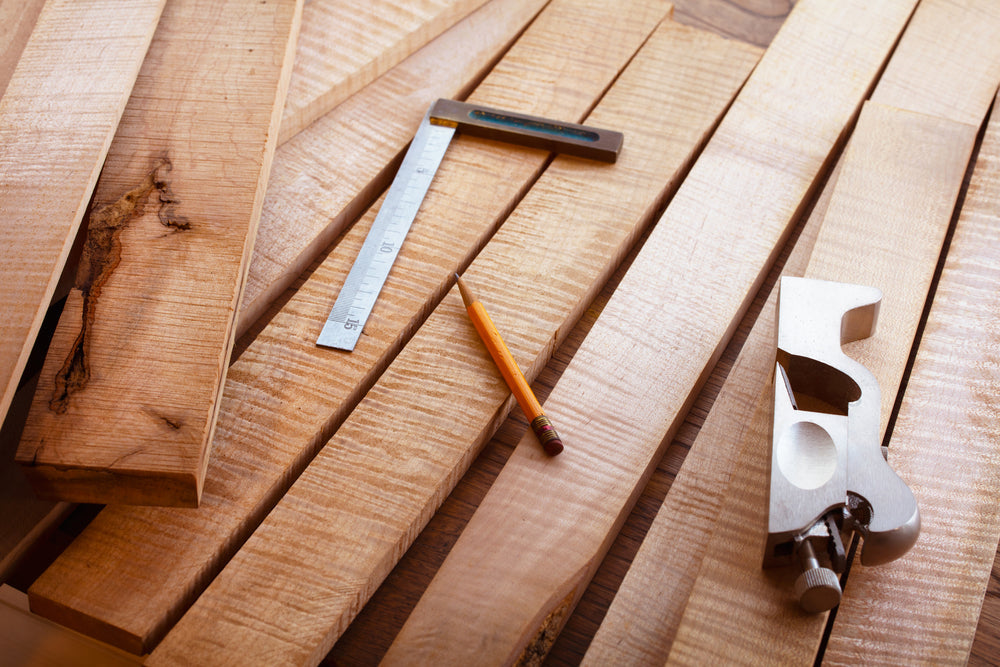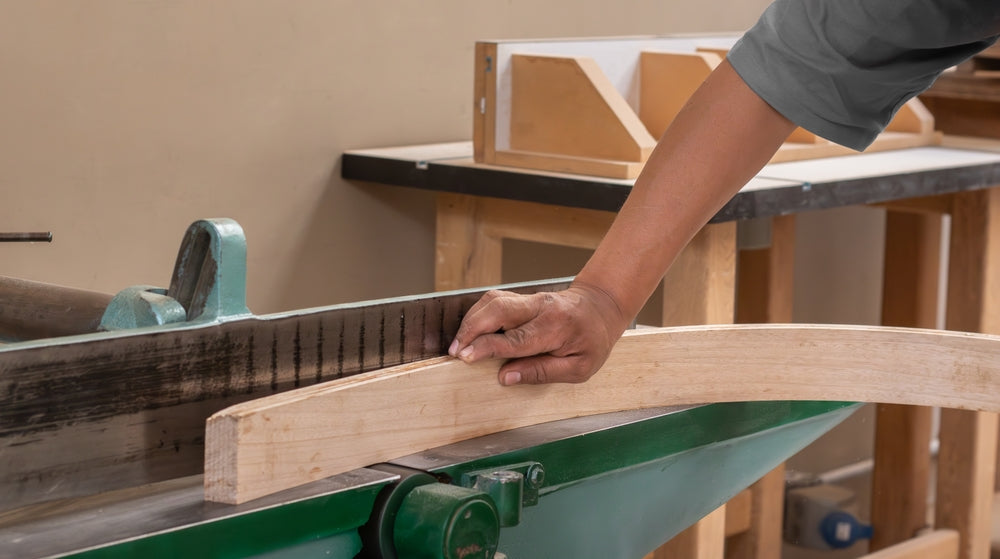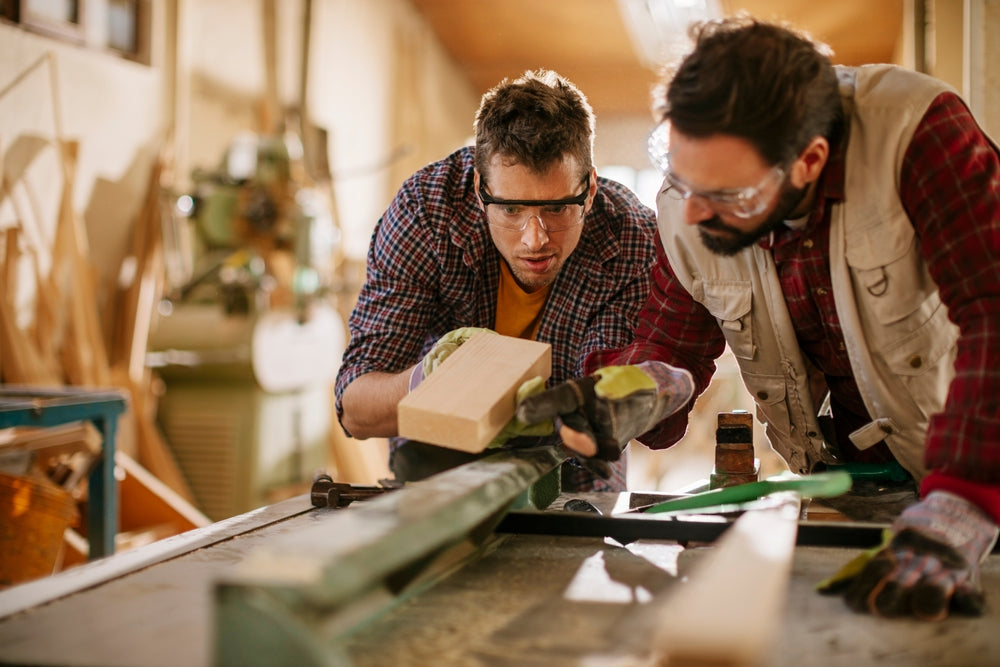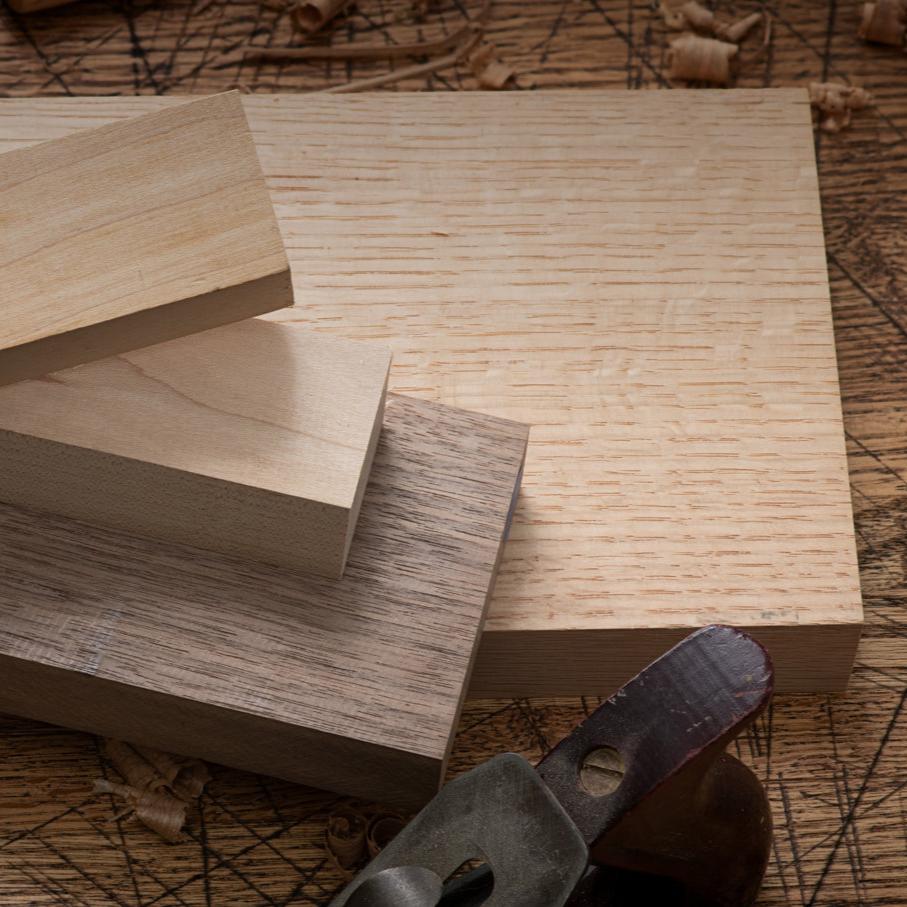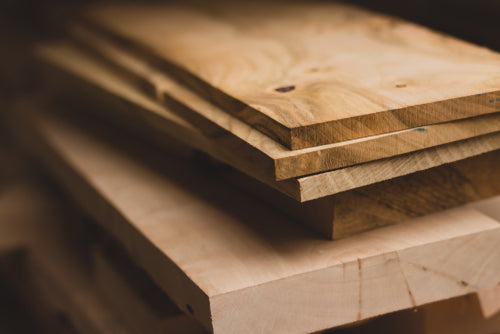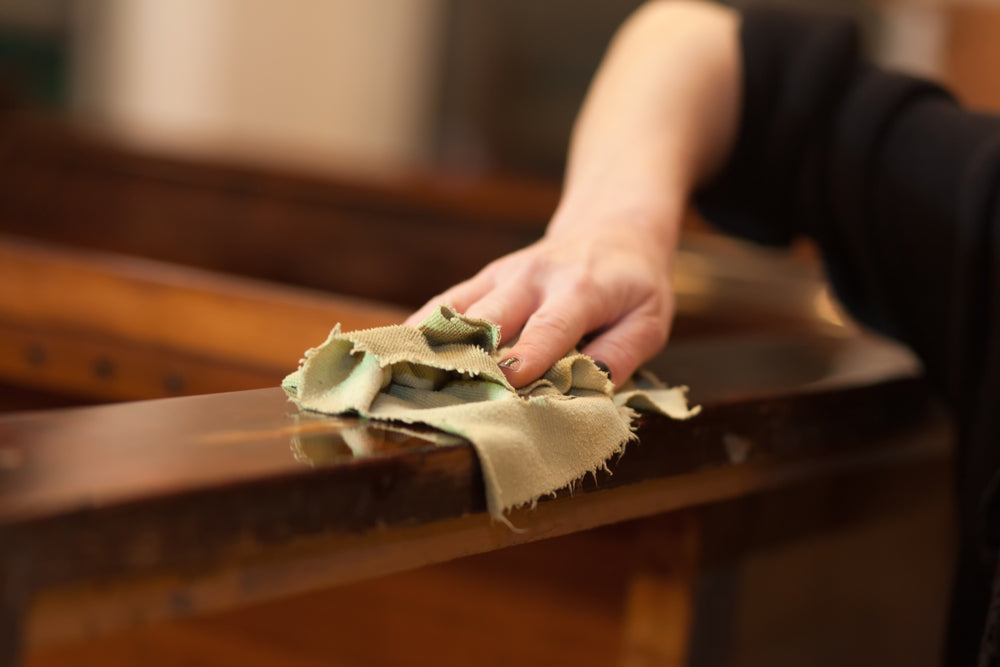North American maple wood is divided into two commercial species: hard maple and soft maple. Hard maple lumber – especially if it’s called white hard maple – is usually made from the sugar maple tree (Acer saccharum).
Soft maple lumber may be made from a variety of different tree species, most commonly red maple (Acer rubrum) and silver maple (Acer saccharinum).
But how do you tell these two species apart? And how do you know which is better for your woodworking project?
At North Castle Hardwoods, we’ve produced some of the nation’s finest maple lumber for over 30 years. Here’s what you need to know about hard maple vs soft maple wood.
Is Maple a Hardwood or Softwood?
Both hard maple and soft maple woods are types of hardwood lumber. Whether or not a lumber species is considered a “hardwood” depends on the type of tree it comes from – not the physical hardness of the wood itself.
All maple species are angiosperm trees, which means that they produce broad leaves and flowers and lose their leaves in the fall. So all maple wood – whether it comes from sugar maple, red maple, or silver maple trees – is considered a hardwood. That said, wood sold as “hard maple” is harder and more dense than soft maple wood.
How Hard is Maple Wood?
Maple wood from the sugar maple tree is one of the hardest and most dense types of all North American lumber. This is why it’s commercially called “hard maple,” or even sometimes “rock maple.” On the Janka hardness scale, hard maple has a score of 1450.
Soft maple, made from silver maple or red maple trees, has a Janka hardness of 700 to 950. This puts it on par with cherry wood. But both hard maple and soft maple are “harder” – that is, denser – than construction-grade softwoods like pine.
The Janka hardness scale measures the resistance of wood to dents and wear. The Janka rating measures how much force it takes to embed an 11.28mm steel ball halfway into a piece of wood.
Is Maple Wood Heavy?
Each species of maple has a different weight. Hard sugar maple weighs 44 lb per cubic foot. Soft maple ranges between 32 lb to 38 lb per cubic foot, depending on the species. Hard maple is considered a moderately heavy wood, while soft maple is on the lighter end of the weight list.
Hard Maple: Characteristics and Uses
Because of its density, hard maple wood is more durable than soft maple. It’s often used for flooring in bowling alleys or dance halls. It can be used to make baseball bats, pool cues, tool handles, butcher blocks, cutting boards, and restaurant furniture. Anything that needs to take a beating is best made from hard maple. Its density also produces a beautiful resonance when used in musical instruments, like guitars or piano actions.
Soft Maple: Characteristics and Uses
Soft maple is a great wood-turning wood. It makes great doors, furniture, cabinets, moldings, veneer, millwork and crates. It’s commonly stained to imitate cherry, mahogany, or even walnut in the furniture industry. But it’s not suitable for projects in which you need a lot of durability.
Both types of maple wood are prone to cracking and are not very weather-resistant, making maple a poor choice for outdoor furniture.
Is Hard Or Soft Maple Easier To Work With?
The short answer is soft maple is a little easier to work than hard maple. Both are generally very workable, but soft maple is less dense. Hard maple burns more easily because of its high sugar content, and it may dull your tools faster. Both glue well.
When hard maple is not dried properly, it can have a lot of tension, leading to end checks. That’s why, at North Castle Hardwoods, we work with a sawmill that uses extremely fine-tuned specialized maple drying practices. Our hard maple lumber is very workable and has great yield.
Finishing Hard Maple vs Soft Maple
Soft maple soaks up more stain than hard maple, so it is more often used as a substitute for other woods. If you want to stain hard maple, you’ll get best results if you seal the wood first.
Since hard maple’s bright white color is so attractive, it’s less commonly stained. It must be protected with a UV-blocking polyurethane to avoid oxidation.
Key Differences Between Hard Maple and Soft Maple
|
Soft Maple |
Hard Maple |
|
|
Avg. Weight: |
32-38lb per cu. ft. |
44lb per cu. ft. |
|
Janka Hardness: |
950 |
1450 |
|
Color: |
Darker with Red, brown, gray streaks |
White, light cream |
|
Easy to Find: |
Yes |
Yes |
|
Sustainable: |
Yes |
Yes |
|
Eco-friendly: |
Yes |
Yes |
|
Price: |
Affordable |
Affordable+ * |
|
Weather Resistance: |
Low |
Low |
|
Growth Rate: |
12-18” per year |
6-12” per year |
*Hard maple grows more slowly than soft maple and is very desirable. This can lead to higher prices than soft maple, though it is still an affordable, abundant wood.
What to Look For
There are visual differences between hard maple and soft maple boards, but it may take a trained eye to find them. Both species have closed grain.
Soft maple is usually darker or slightly more gray in color. Silver leaf soft maple has noticeable brown or dark streaks, known as fleck. Red soft maple may show some fleck as well. The heartwood of both kinds of maple wood is darker than the desirable sapwood.
At North Castle Hardwoods, we are very particular about the color of our hard maple lumber. Our boards are selected from bright-white “pencil heart” trees and show very little stain, fleck, or carbon pockets. High-quality hard maple is whiter and less likely to show a yellow tint than other “white” woods such as poplar, ash, or hickory.
Maple Wood Grain and Character
Sugar maple trees are slow-growing, so the growth rings are closer together on hard maple boards. Soft silver maple trees, common in warmer southern climates, grow faster and will have growth rings spread farther apart.
Both types of maple typically have straight grain, but occasionally show striking and wonderful character. A curly maple board is typically harder than a piece with straight grain, but a lot of “curly” maple is from a soft maple species. Character patterns such as tiger, fiddleback, and birdseye are more commonly associated with hard maple.
Identifying Maple Furniture and Cabinets
When purchasing furniture, often it will just say it is made of “maple wood”. How do you know which type was used? It can be difficult since both hard and soft maple are used in furniture production.
Soft maple is more often stained and painted than hard maple. You can also test the hardness with your fingernail on a hidden part of your furniture. Hard maple is denser with tiger growth rings.
Is Maple Wood Eco-Friendly?
Maple is very eco-friendly. Both soft and hard maple grow in abundance and are sustainably harvested. At North Castle Hardwoods, we work with suppliers that practice conscientious forest management, so the select harvesting process leaves the forests healthier than they were before.
Hard maple’s durability also helps ensure pieces made will hold up well over time, without needing to be replaced. Furniture made from maple is also considered long-term carbon storage.
Conclusion
Soft maple and hard maple are used for a lot of the same products, like cabinets and furniture, and they are both hardwoods. But they are separate species with unique characteristics. The most prominent differences are color and density.
Choosing the correct maple for your project – especially if it’s something like a cutting board – can make a huge difference in the final quality. Learn more about hard maple on our blog, and be sure to check out Northcastle Hardwood’s selection of high-quality hard maple lumber.
